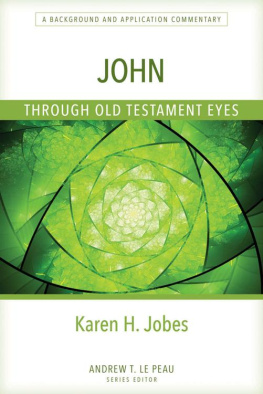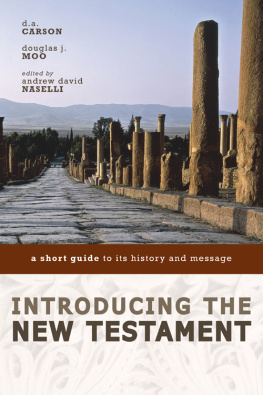The printed version of this eBook is the 50 Proofs for the Bible: New Testament pamphlet, ISBN-13: 9781596361607
Acknowledgments: Text by Professor Larry McKinney, Central Baptist Theological Seminary, Kansas.
Photos/Art: British Museum, Gretchen Goldsmith, Dr. John McRay, Arvel Witte, Rick Humphrey, Paul Fisher.
Special Thanks to Dr. John McRay, Wheaton College, and Michael Cochrane.
Cover: Erastus inscription, Politarch inscription, "Place of Trumpeting" inscription, Madaba Mosaic, Caiaphas's Ossuary, First century oil lamp.
Scripture taken from HOLY BIBLE: NEW INTERNATIONAL VERSION. 1973, 1978, 1994 by International Bible Society. Used by permission of Zondervan Publishing House. All rights reserved.
It is illegal to photocopy, transmit electronically, post on the internet, or reproduce this pamphlet in whole or in part in any form.
2008 RW Research, Inc.
Rose Publishing, Inc.
4733 Torrance Blvd., #259
Torrance, California 90503 U.S.A.
Email: info@rose-publishing.com
www.rose-publishing.com
All rights reserved.
50 Proofs for the Bible
New Testament
This handy eBook:
- Provides solid evidence that supports the trustworthiness of New Testament Scripture to help anyone who has questions about the accuracy of Scripture.
- Features 50 important archaeological finds that provide the Bibles accuracy, including the Pontius Pilate inscription that confirms Pilates historicity as Roman prefect in Luke 3.
- Gives explanations to understand the Bible better by explaining backgrounds and cultures in the Bible.
Arrangement of Events
The contents of this chart are generally arranged from the earliest events mentioned in the Bible to the most recent events.
Dates of Events (examples)
1st century AD = AD 1-100
2nd century AD = AD 101-200
10th century AD = AD 901-1000
13th century AD = AD 1201-1300
1st millennium AD = AD 1-1000
2nd millennium AD = AD 1001-2000
Reference Materials
Archaeology and the New Testament , Dr. John McRay.
Rose Publishing resources that will help in the study of this topic are:
420X Bible Time Line pamphlet
306X Then and Now Bible Maps book
302L Holy Land: Then & Now wall chart
304L Paul's Journeys: Then & Now wall map
305L Where Jesus Walked: Then & Now wall map
418L Archaeology & the Bible: Old Testament wall chart
434L Archaeology & the Bible: New Testament wall chart
544L Jerusalem at the Time of Jesus wall chart
622X 50 Proofs for the Bible: Old Testament pamphlet
621X 100 Proofs for the Bible PowerPoint
The Life and Ministry of Jesus
Archaeological Find
1. The Church of the Nativity in Bethlehem
Archaeology has shown that the use of caves as animal stables in the Holy Land has been a common practice from very ancient times. Ancient records show that for at least two centuries before a church was built, Christians had marked this particular cave as the place of Jesus birth.
Description of the Find

Since AD 326 a building known as the Church of the Nativity has stood over a cave at what was the ancient outskirts of Bethlehem. John McRay
Importance of the Find
Matthew 2:1-8, Luke 2:4-15, and John 7:42 all identify Bethlehem as the place of Jesus birth. Because Joseph and Mary could find no room at the village inn and the newborn Jesus was laid in a manger (animal feedbox), it has been assumed that the birth took place in a stable. The niche in the image above marks the place that Christians throughout history identified as Jesus birthplace. Archaeology and tradition combine in this instance to lend both accuracy and insight to the Gospel accounts.
Book(s) of the Bible
Matt., Mark, Luke, John
Archaeological Find
2. Nazareth, Hometown of Jesus
Today Nazareth is a bustling Arab-Jewish city built atop and around the ancient village, located in the southern hills of lower Galilee.

Church of the Annunciation. Gretchen Goldsmith
Description of the Find
The modern Church of the Annunciation (above) stands over an ancient church building. Excavations in the church and around its grounds have turned up silos, olive oil presses, foundations of houses, and many artifacts from Christs time. The nearby Church of St. Gabriel stands over the citys ancient well, and the well is still fed by fresh spring water.
Importance of the Find
Little would be known about the town where Mary received the angelic news that she would give birth to Christ, and where Jesus grew up, if it were not for the Christian holy places and archaeology. Matthew 2:23, 4:13, Mark 1:9, and Luke 1:26-28 give the New Testament accounts of the events connected with Nazareth. John 1:46 also mentions Nazareth.
Book(s) of the Bible
Matt., Mark, Luke, John
Archaeological Find
3. Bethsaida, City of Woe
Much of the ancient harbor city of Bethsaida has been recovered since 1987 after several seasons of archaeological work. It has finally been placed accurately on biblical maps as a result.
Description of the Find

John McRay
Importance of the Find
Bethsaida was the birthplace of Peter, Andrew, and Philip, and is mentioned in the Gospels more than any other city except Capernaum and Jerusalem. Jesus pronounced a woe (condemnation) upon the city in Matthew 11:21 and Luke 10:13. It was destroyed around AD 66-68, and was never rebuilt. Mark 8:22 and John 1:44 also mention Bethsaida.
Book(s) of the Bible
Matt., Mark, Luke, John
Archaeological Find
4. Cana, Site of a Wedding Feast
Archaeological investigations show that the ruins at Khirbet Qana were a village during the time of Christ. Its ruins are located about nine miles north of Nazareth.
Description of the Find
The Gospel of John (John 2:1-11) records the miracle of Jesus turning water into wine during a wedding celebration in the village of Cana.
Importance of the Find

Cana ruins at Khirbet Qana date to the time of Christ. John McRay
Book(s) of the Bible
John
Archaeological Find
5. The House Church at Capernaum
While excavating an early church building at Capernaum in 1968, archaeologists found that the building had been placed over a house from the time of Jesus.
Description of the Find
























